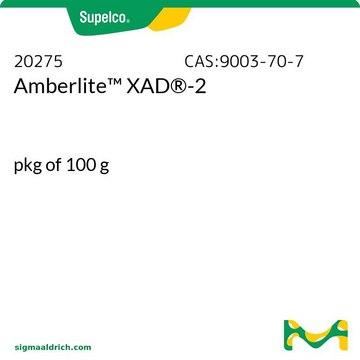推荐产品
一般說明
Research area: Cell signaling. Nanodiscs are non-covalent structures that contain a phospholipidbilayer and a membrane scaffold protein (MSP), a genetically engineeredprotein, that mimics the function of Apolipoprotein A-1 (ApoA-1). The firstMSP, MSP1, was engineered with its sequence based on the sequence of A-1, butwithout the globular N-terminal domain of native A-1. The Membrane ScaffoldProtein 1D1 (MSP1D1) variant of MSP1 deletes the first 11 amino acids in theHelix 1 portion (referred to as “H0.5” in the accompanying figure) of theoriginal MSP1 sequence.It consists of an N-terminal histidine-tagged protein with a tobaccoetch virus (TEV) protease cleavage site that is present between the proteinsequence and histidine-tag.Nano-disctechnology is an approach that allows aqueous soluble membrane proteins in anative-like bilayer environment that enables the membrane proteins to remainactive and stable.
應用
纳米盘可溶性脂质双层系统已被证明是一种广泛适用的方法,用于呈现膜蛋白可溶于水溶液中,在类似原生的双层环境中保持单分散和活性。纳米盘的关键组成部分是环绕的两亲性螺旋蛋白带(膜支架蛋白)。
纳米盘系统已经被用于包括 GPCRs 、P450 、细菌视紫红质 、凝血因子 、霍乱毒素 、焦油受体 和芳香化酶 等多种蛋白质的掺入。
For guidelines on the use of this and other MSP′s to prepare Nanodiscs, please visit our Protocols for Membrane Scaffold Proteins and Nanodisc Formation page.
生化/生理作用
MSP1D1 can self-assembleinto discoidal nanoparticles known as nano-discs. These nano-discs may be used inthe field of medicine, biotechnology, and membrane protein studies.
生成直径约为 9.7 nm 的纳米盘
法律資訊
纳米盘技术,以及它的许多用途,都被伊利诺伊大学拥有的以下专利所涵盖。
- 7,691,414 膜支架蛋白
- 7,662,410 膜支架蛋白和包埋膜蛋白
- 7,622,437 组织因子组成和方法
- 7,592,008 膜支架蛋白
- 7,575,763 膜支架蛋白和栓系膜蛋白
- 7,083,958 膜支架蛋白
- 7,048,949 膜支架蛋白
Nanodisc technology, and many of its uses, are covered by the following patents held by the University of Illinois.
- 7,691,414 Membrane scaffold proteins
- 7,662,410 Membrane scaffold proteins and embedded membrane proteins
- 7,622,437 Tissue factor compositions and methods
- 7,592,008 Membrane scaffold proteins
- 7,575,763 Membrane scaffold proteins and tethered membrane proteins
- 7,083,958 Membrane scaffold proteins
- 7,048,949 Membrane scaffold proteins
儲存類別代碼
10 - Combustible liquids
水污染物質分類(WGK)
WGK 2
閃點(°F)
Not applicable
閃點(°C)
Not applicable
其他客户在看
Christopher I Cazzonelli et al.
eLife, 9 (2020-02-01)
Carotenoids are a core plastid component and yet their regulatory function during plastid biogenesis remains enigmatic. A unique carotenoid biosynthesis mutant, carotenoid chloroplast regulation 2 (ccr2), that has no prolamellar body (PLB) and normal PROTOCHLOROPHYLLIDE OXIDOREDUCTASE (POR) levels, was used
Benjamin J Cole et al.
PLoS biology, 15(9), e2002860-e2002860 (2017-09-25)
Diverse soil-resident bacteria can contribute to plant growth and health, but the molecular mechanisms enabling them to effectively colonize their plant hosts remain poorly understood. We used randomly barcoded transposon mutagenesis sequencing (RB-TnSeq) in Pseudomonas simiae, a model root-colonizing bacterium
Yan Bao et al.
Autophagy, 14(9), 1562-1573 (2018-06-27)
Macroautophagy/autophagy is a conserved process in eukaryotes that contributes to cell survival in response to stress. Previously, we found that endoplasmic reticulum (ER) stress induces autophagy in plants via a pathway dependent upon AT5G24360/IRE1B (INOSITOL REQUIRING 1-1), an ER membrane-anchored
Ping Wang et al.
Autophagy, 16(1), 123-139 (2019-03-27)
Autophagy is a conserved catabolic process in eukaryotes that contributes to cell survival in response to multiple stresses and is important for organism fitness. In Arabidopsis thaliana, the core machinery of autophagy is well defined, but its transcriptional regulation is
实验方案
The following material related to Nanodisc Technology is adapted from on-line content of the research group of Professor Stephen Sligar of the University of Illinois at Urbana-Champaign, with the kind permission of Professor Sligar.
我们的科学家团队拥有各种研究领域经验,包括生命科学、材料科学、化学合成、色谱、分析及许多其他领域.
联系技术服务部门
